Trip deprivation can legitimately reflect both functioning and capability when deprivation is carefully defined.
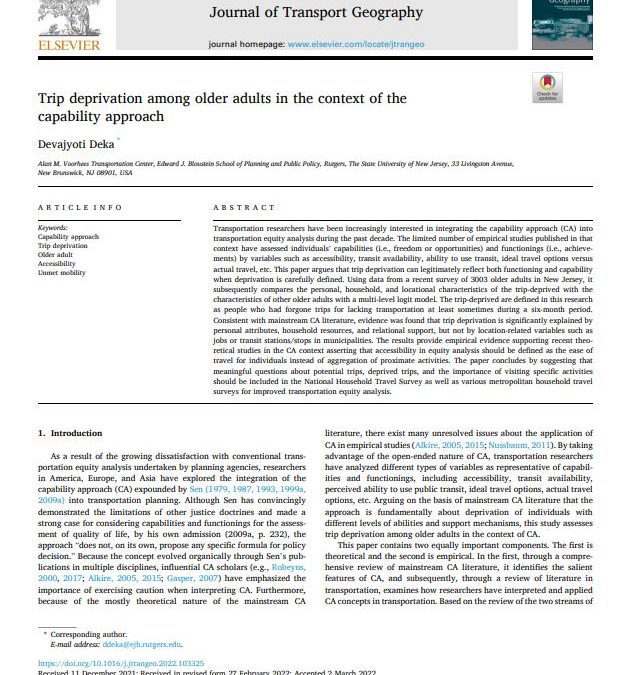

Trip deprivation can legitimately reflect both functioning and capability when deprivation is carefully defined.
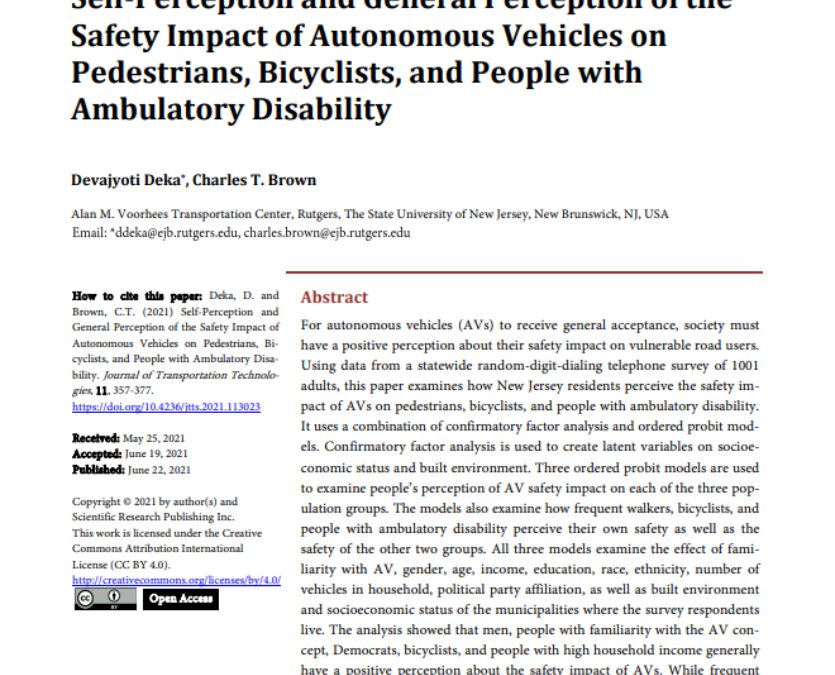
Using data from a statewide random-digit-dialing telephone survey of 1,001 adults, this paper examines how New Jersey residents perceive the safety impact of AVs on pedestrians, bicyclists, and people with ambulatory disability.
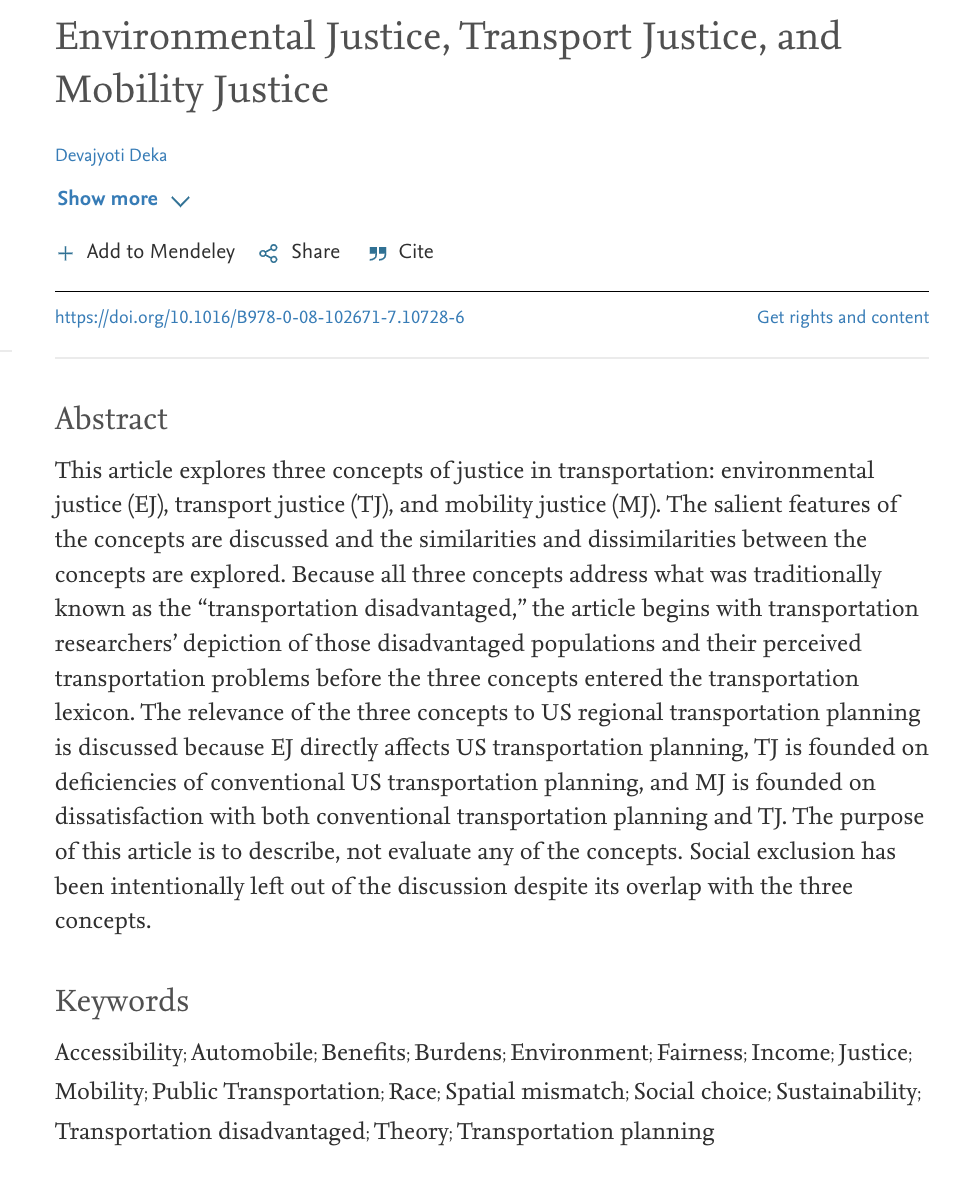
This article explores three concepts of justice in transportation: environmental justice (EJ), transport justice (TJ), and mobility justice (MJ).
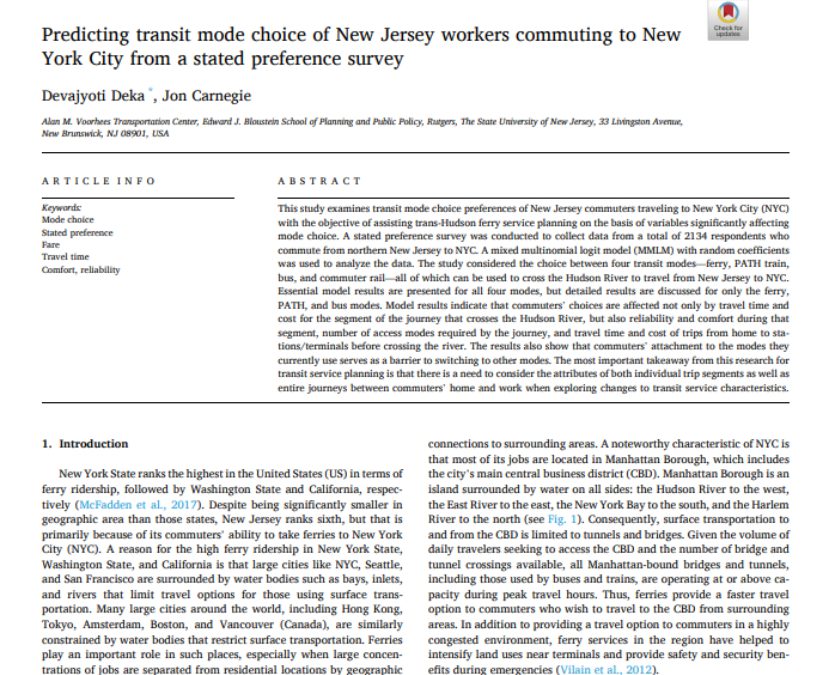
This study examines transit mode choice preferences of New Jersey commuters traveling to New York City with the objective of assisting trans-Hudson ferry service planning on the basis of variables significantly affecting mode choice.
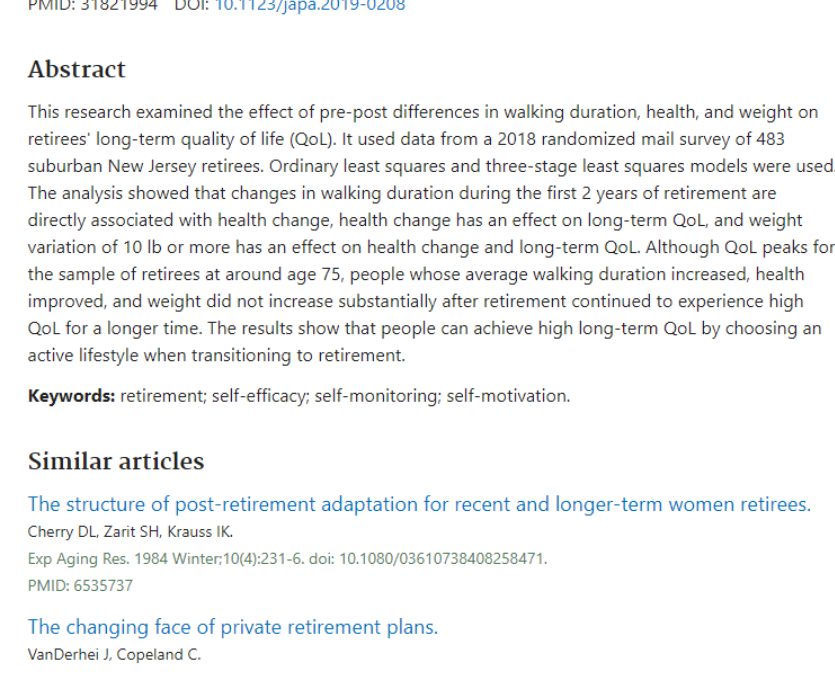
This research examined the effect of pre-post differences in walking duration, health, and weight on retirees’ long-term quality of life (QoL).
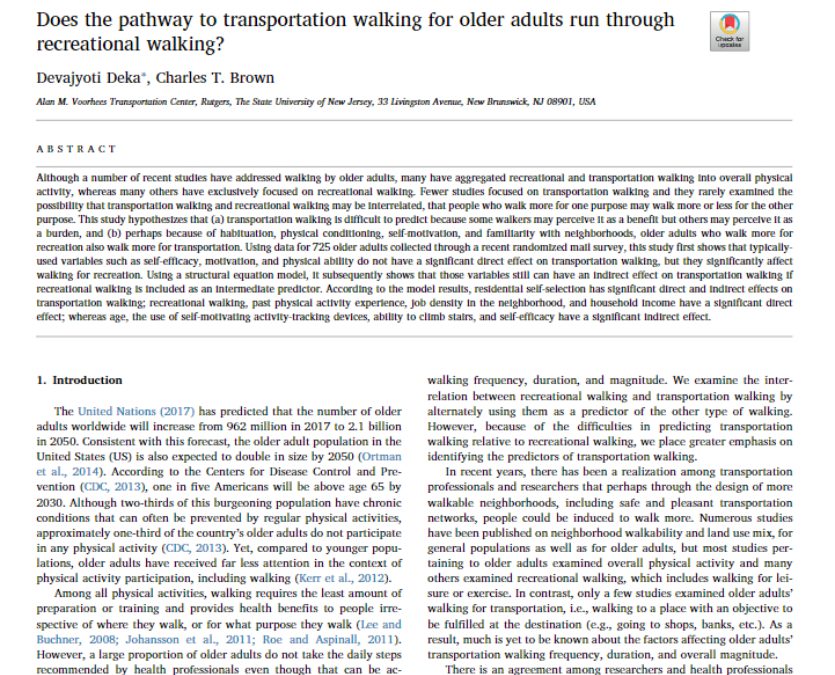
Although a number of recent studies have addressed walking by older adults, many have aggregated recreational and transportation walking into overall physical activity, whereas many others have exclusively focused on recreational walking.
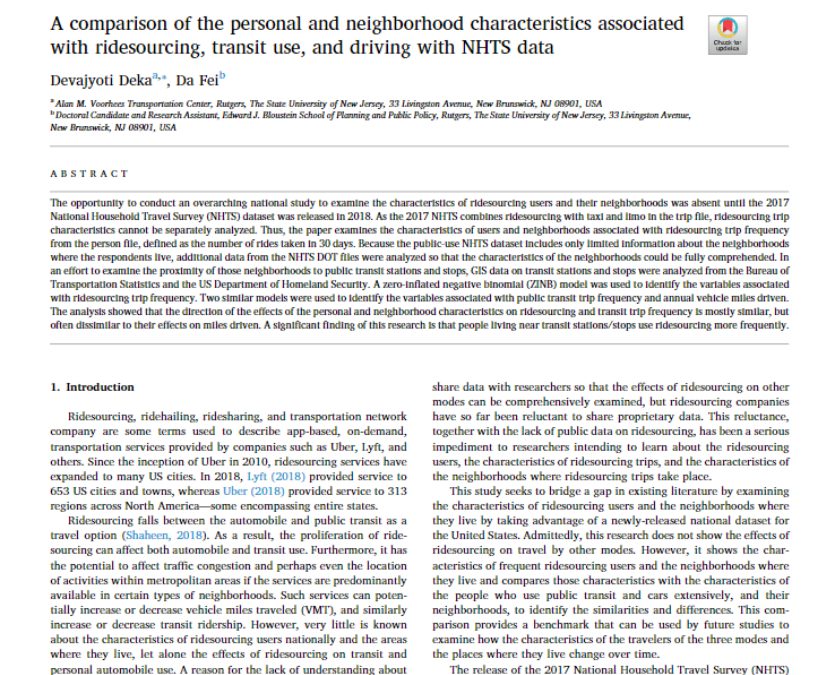
The opportunity to conduct an overarching national study to examine the characteristics of ridesourcing users and their neighborhoods was absent until the 2017 National Household Travel Survey (NHTS) dataset was released in 2018.
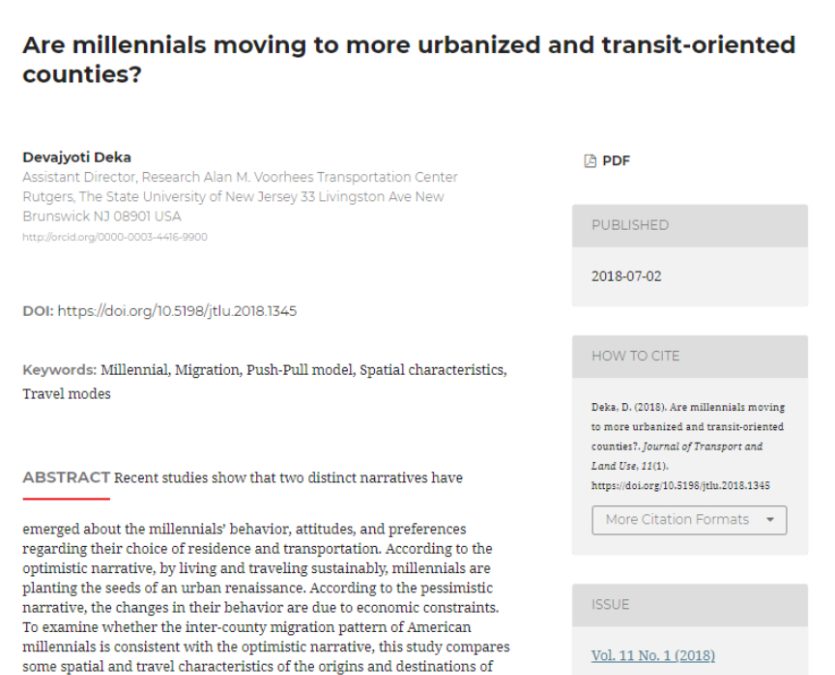
Recent studies show that two distinct narratives have emerged about the millennials’ behavior, attitudes, and preferences regarding their choice of residence and transportation.
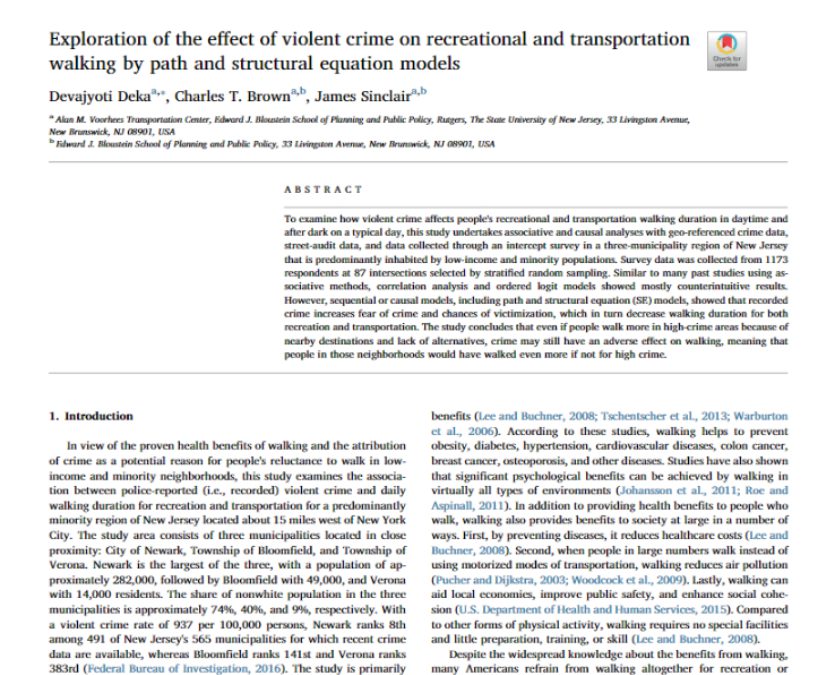
To examine how violent crime affects people’s recreational and transportation walking duration in daytime and after dark on a typical day.
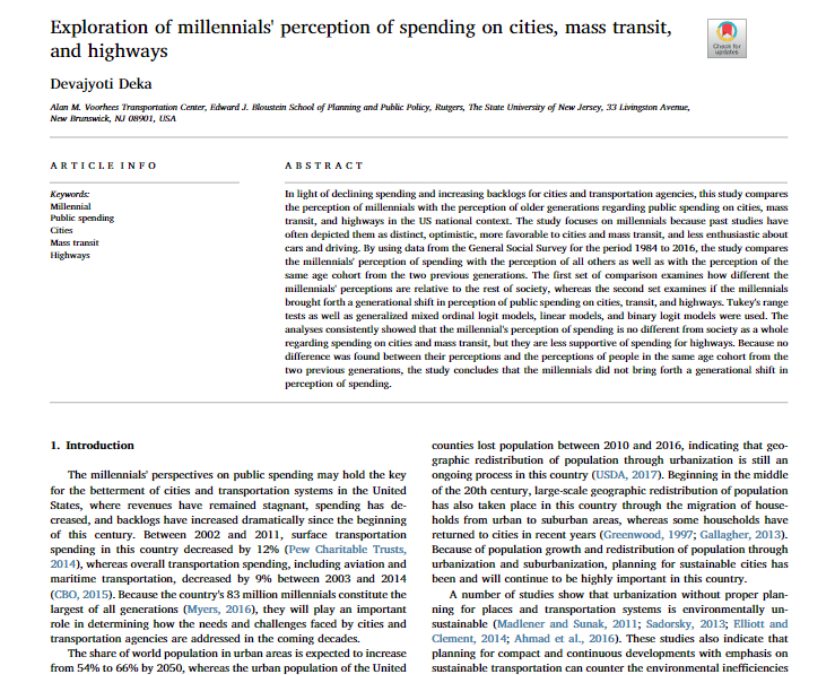
This study compares the perception of millennials with the perception of older generations regarding public spending on cities, mass transit, and highways in the US national context.
Induced travel elasticities associated with new road capacity are typically estimated for roads of higher functional classifications, such as interstate freeways and principal arterials. These are estimated as “own” elasticities, that is an increase in lane kilometers...
There is a growing perception that e-scooters are more dangerous than bicycles and e-bikes, with towns implementing measures to ban their usage. Yet, there is not much evidence from large scale surveys to substantiate this claim. Nearly 14,000 micromobility injuries...
We compare charging station accessibility for different income groups in the San Francisco Bay Area. Using a microsimulation model, we estimate charging station accessibility under varying battery range scenarios, assuming different income groups have vehicles with...
The New Jersey Micromobility Guide serves as a resource for micromobility users across the state, collecting and summarizing the laws and safety best practices that can make riders safer. Micromobility, which includes e-bikes, e-scooters, and other low-speed devices,...